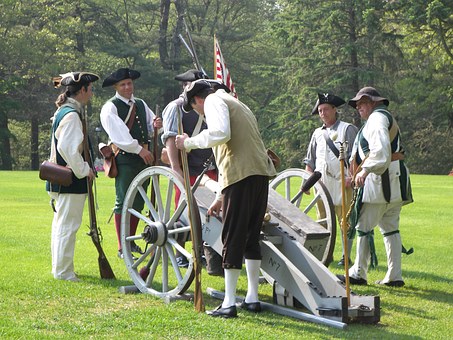Quill Pen
Contentious elections have always been a feature of American politics starting with the very first presidential and Congressional elections in 1789. The election almost didn’t happen because Rhode Island, North Carolina and New York had not yet ratified the brand new Constitution.
The Constitution was cooked up by the Continental Congress, a group of top 1% white men who owned real estate or businesses or both. Fortunately for American democracy, these men were both pragmatic and visionary. They aspired to create the most perfect democracy in the world. But they pragmatically gave up on perfection by compromising on the issue of slavery in order to induce the slave owners from the southern states to support ratification.
Even with the compromises, the new Constitution was controversial. Many people feared that giving too much power to a central government would inevitably lead to dictatorship. To win support for ratification, a public education campaign was implemented. The Federalist Papers were op-ed pieces in which each installment explained the rationale behind the powers outlined in the Constitution. The authors were Alexander Hamilton (1st Treasury secretary), James Madison (4th president), and John Jay (1st chief justice of the Supreme Court).
The Federalist Papers, edited by Clinton Rossiter
The Federalist Papers were published in newspapers, the 18th century version of CNN and Fox News. But soon the op-ed campaign was jeopardized by a new post office regulation that slowed the distribution of newspapers across the country. Federalists, including George Washington, cried foul play because they feared the slowdown would give the upper hand to anti-federalists.
In the end, New York ratified the Constitution and the new government was secured. But the federalists remained twitchy going into the first congressional elections. The country was evenly divided and federalists worried that Congress would be dominated by anti-federalists. If anti-federalists gained control of both houses of Congress, the new model of democracy would be killed off before it could take root.
When the votes were counted, the House had a pro-federalist majority and the Senate was balanced between pro- and anti-federalists. Congress set to work on two important tasks. The first task was to ensure that the Electoral College properly voted on a president.
Washington Monument
On February 4, 1789, the Electoral College unanimously elected George Washington as president. Although Washington didn’t campaign to become president, he was the most widely respected man in the country and there was never any doubt he would be elected president. He was officially notified on April 14, 1789.
The second task for the first term of Congress was to hash out the details of how the government would actually function. Today, regulatory agencies handle the details. One hot topic was a Congressional veto. Half the Senate distrusted a powerful presidency and wanted the power to retain Cabinet members who opposed the president’s policies. The Senate vote was a tie, leaving Vice President John Adams to break the deadlock by voting “no”. The President continues to control the Cabinet.
John Adams
Having worked all summer, Congress adjourned on September 30, 1789. That’s when the politicking really took off. The founders of the U.S. were avid letter writers, the social media of their day, and they exchanged lengthy letters seeking allies. Before long, the members of Congress were self-selecting into groups based on their vision of the country.
Federalists wanted a strong central government and an economy based on industry while states-rights advocates wanted a weak central government and an economy based on agriculture. Basically, that translated into northern states with factories against southern states with slave plantations. That regional breakdown continues to influence elections today.
Polling Station
Washington retired in 1797 after his second presidential term. That was the cue for the new political parties to contest the presidential and Congressional election of September 1797. Voting was a raucous affair. Most polling locations were taverns. The political candidates offered each voter free whiskey and empty political promises. Voters publicly announced their choice then bellied up to the bar for another round on the house. The candidate who supplied the most whiskey won.
Washington: The Indispensable Man, by Flexner
The Great Decision, by Sloan & McKean
If you would like a readable one volume biography of George Washington, see Washington: The Indispensable Man, by James Thomas Flexner (1974 edition). For a description of whisky voting, see The Great Decision, by Cliff Sloan and David McKean (2009)
If you’d like my blogs sent directly to your inbox, simply click here and sign up today! And we’ll see you next week!














